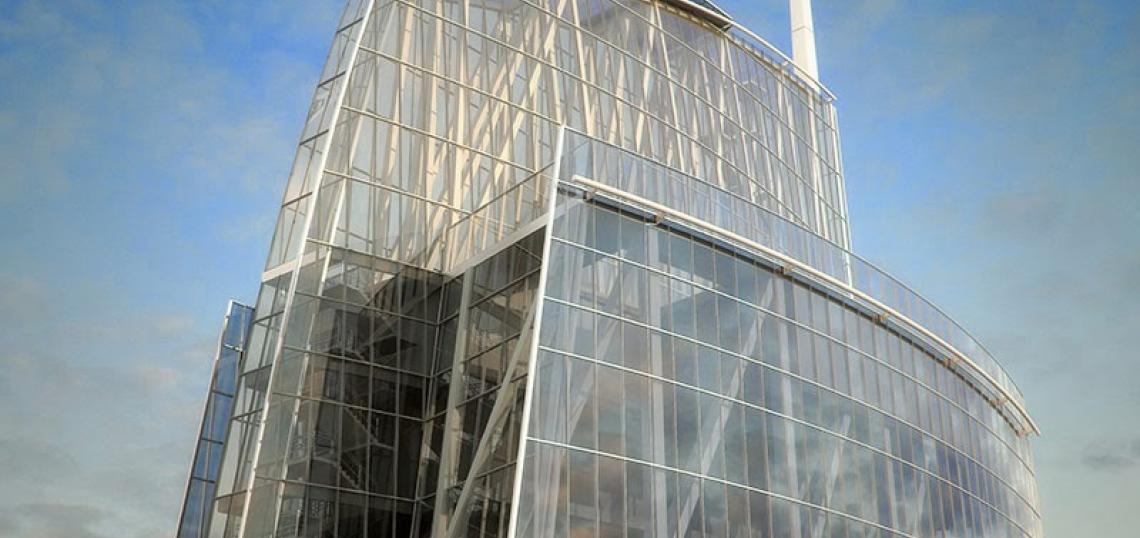Newly instituted changes to Los Angeles' fire code have finally opened the door for iconic high-rise architecture, allowing for case-by-case exceptions to the onerous rooftop helipad mandate that has shaped the city's boxy, flat-topped skyline. The first beneficiary of this rule change, Korean Airlines' 73-story Wilshire Grand Tower, is slated to become the West Coast's tallest building, featuring a dramatic spire that stretches 1,100 feet into the sky. Now, a City Council motion introduced by Councilmember Jose Huizar seeks to break down additional barriers, calling on the Los Angeles Fire Department to evaluate whether or not the city's 40-year-old rooftop helipad ordinance is truly necessary.
Noting that Los Angeles is currently the only major American city with such a requirement for its high-rise buildings, the motion directs LAFD to draft a report that would determine if the rooftop helipad ordinance remains necessary in an era of improved construction technology and safety measures. By reviewing the "codes, standards, best practices and regulations implemented in other large cities," LAFD could recommend changes or alternatives to current regulations that would facilitate architectural rooftops without compromising safety.
Los Angeles need only look 120 miles south to find another large city that underwent a similar debate. During the 1980's, San Diego also weighed the potential for iconic towers against the spectre of fire safety. In the wake of increasing criticism over its bland waterfront skyline, the San Diego City Council ultimately voted to repeal its rooftop helipad ordinance. This change reflected a shift in attitude within the city's Fire Department, which acknowledged that helicopters were a relatively inefficient means of evacuation for high-rise buildings. Since that point, San Diego has constructed a variety of office, hotel and residential towers with sculpted rooftops, including the obelisk-shaped One America Plaza.
Politicians and architecture enthusiasts alike have made similar complaints in Los Angeles, blaming the helipad ordinance for the city's "flat, uninspired rooflines." Some fire safety experts have also questioned the wisdom of the helipad law, noting that the mandatory helicopter infrastructure is expensive to build but rarely used. From a dollars and cents standpoint, other fire safety alternatives could prove to be more worthwhile investments. Examples of such can be found in the the Pacific Design Center's Red Building, which was notably granted an exemption from Los Angeles County's helipad ordinance due to its pressurized elevator system.
- New High-Rise Buildings/Helipad Landing Facility/Fire-Life Safety (Los Angeles City Council)
- Huizar, LAFD Announce New Policy Allowing Iconic Rooflines... (Jose Huizar - CD14)
- Laws That Shaped L.A.: Why is the Los Angeles Skyline So Bland? (KCET)
- Helipad Rule Change May Bring San Diego Skyline a New Peak or Two (Los Angeles Times)
- Flat Roofs and Fire Safety: Pelli's Red Fin Rises Amid Helipad Debate (Curbed LA)






